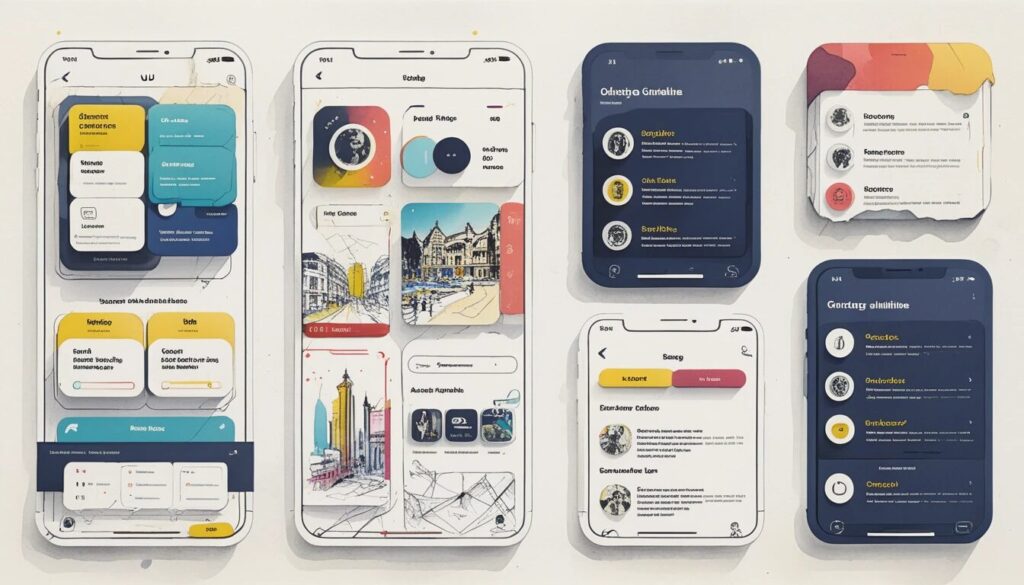Mastering Mobile App Development: Your No-Nonsense Guide
Let’s be real—mobile apps are running the world. They’re like that one influencer who somehow made a career out of unboxing things. With over 6.6 billion smartphone users worldwide, mobile applications have become as essential as oxygen (or at least as essential as WiFi). From tracking our steps to reminding us to drink water, apps have infiltrated every aspect of life. But let’s cut through the fluff—mobile app development isn’t just about slapping together some code and hoping for the best. It’s an intricate process that demands strategy, execution, and a whole lot of patience.
So, if you’re ready to dive into the app development process, compare the best mobile app platforms, and settle the eternal debate of native vs hybrid apps, you’ve come to the right place. Let’s break it down.
The App Development Process: From Concept to Launch
- Validate Your Idea – Ensure your app solves a real problem.
- Research Your Market – Analyze competitors and define your audience.
- Plan the UX/UI – Create wireframes and focus on usability.
- Develop Your App – Choose between native, hybrid, or cross-platform development.
- Test Rigorously – Identify bugs and optimize for performance.
Before you even think about coding, ask yourself: Does the world need another generic productivity app? Be brutally honest. The best apps solve real problems, not just add to the clutter.
Market research is your next crucial step. If your idea already exists (spoiler: it probably does), find out what your competitors are missing. Your app doesn’t need to reinvent the wheel, but it does need to outshine the existing options.
Once your concept is validated, it’s time to design the user experience. A sleek, intuitive UI isn’t just a nice touch—it’s a necessity. If users need a manual to navigate your app, you’ve already lost.
Then comes development, where you decide between native, hybrid, or cross-platform app development. Each has its pros and cons, which we’ll get into shortly.
Finally, test your app like your reputation depends on it—because it does. Users have zero tolerance for buggy software. Run extensive tests, fix performance issues, and gather real feedback before launch.
Best Mobile App Development Platforms: The Power Players
- BuildFire – No-code app builder with plug-and-play functionality.
- Flutter – Google’s open-source framework for cross-platform apps.
- Xamarin – Microsoft-backed framework offering native-like experiences.
- Adobe PhoneGap – A hybrid app development tool using web technologies.
Choosing the right platform is like picking a favorite coffee shop—each has its perks. BuildFire is perfect for non-coders, allowing drag-and-drop customization. Meanwhile, Flutter is a go-to for developers wanting a single codebase across iOS and Android.
For those fluent in C#, Xamarin offers near-native performance. And if you’re after a quick, web-based solution, Adobe PhoneGap brings hybrid development to the table.
Native vs Hybrid vs Cross-Platform: The Ultimate Face-Off
- Native Apps – Best performance but costly and time-intensive.
- Hybrid Apps – Budget-friendly but may sacrifice speed.
- Cross-Platform Apps – A compromise between efficiency and performance.
The native vs hybrid apps debate is as heated as pineapple on pizza. Native apps, built specifically for either iOS or Android, deliver top-tier performance but demand separate development for each platform. More code, more money, more time.
Hybrid apps, on the other hand, use a single codebase to operate across multiple platforms. They’re cost-effective and quicker to develop but may suffer from sluggish performance. Think of them as fast food—convenient, but not always the best quality.
Then there’s cross-platform development, which finds the middle ground. It allows developers to write one codebase that works on both iOS and Android. While it doesn’t match native speeds, it’s a solid choice for those who want efficiency without breaking the bank.
Progressive Web Apps: The Underestimated Contender
- Affordable – No app store approval means fewer costs.
- Cross-Device Compatibility – Works on any browser-enabled device.
- Feature Limitations – Lacks full access to device hardware.
Progressive Web Apps (PWAs) are the rebels of the app world. They don’t play by the traditional rules, running in browsers while mimicking native experiences. They work offline, send push notifications, and bypass app store bureaucracy.
However, PWAs aren’t perfect. They can’t fully tap into device functionalities, making them less ideal for high-performance apps. But if you’re after a lightweight, budget-friendly alternative, they’re worth considering.
How to Choose the Right Development Approach
- Consider Your Budget – Native apps cost more; hybrid and cross-platform are more affordable.
- Think About Performance – If speed and responsiveness matter, native development is the way to go.
- Evaluate Time Constraints – Need a quick launch? Hybrid or cross-platform may be your best bet.
- Factor in Scalability – Choose a framework that supports future updates and expansions.
Your choice of development approach depends on multiple factors. If you have the budget and need the best performance, go native. If time and cost are concerns, hybrid or cross-platform apps are solid alternatives.
Scalability is another crucial consideration. If you plan to expand your app’s features over time, pick a framework that can grow with your needs.
Final Thoughts
Mobile app development is a high-stakes game. Whether you opt for native, hybrid, cross-platform, or even PWAs, the key to success lies in creating a seamless user experience.
For those looking for an easier route, BuildFire offers a no-code solution with robust customization. But if you’re ready to dive into full-scale development, choose your approach wisely—because in the app world, mediocrity won’t cut it.
